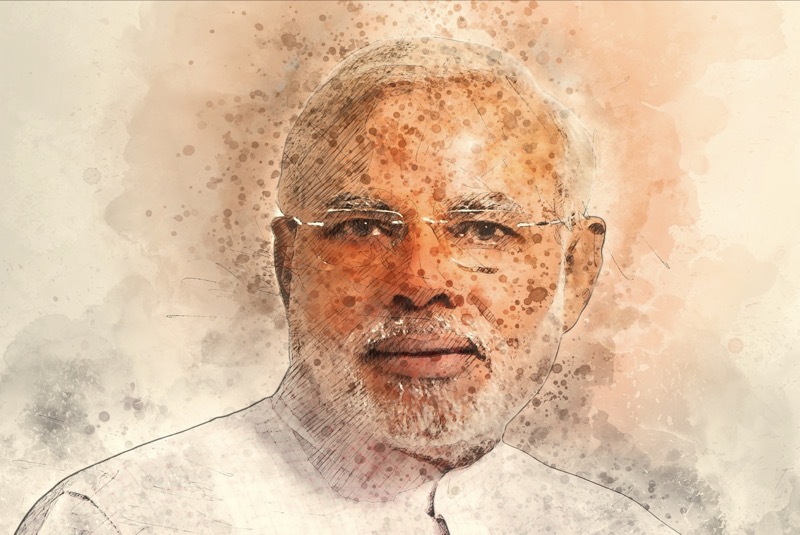The year 2024 will be remembered as a milestone in the history of electoral democracies. Almost half the global population, including citizens of India and the US, the two largest democracies, would have exercised their voting rights by the end of this year.
Since science and technology (S&T) can contribute to democratic traditions and institutional strengths only when aligned well with a country’s aspirations, evaluating the state of that alignment in today’s India may help the common person make an informed choice before the next elections.
The survival of India’s democracy for 75 years after it became an independent nation is a unique success story that all Indians can be proud of. No other former colony with India’s religious, linguistic, and economic diversities has been able to practice democracy as successfully.
India has so far withstood the stress of transiting from the ‘commanding heights of the public sector’ economy to one of ‘jobless growth’ only due to people’s inherent faith in democracy. However, S&T in India has not been immune to these profound changes. Therefore, the question to be asked before the next elections is how the present government has fulfilled the societal expectations of indigenous S&T capabilities.
A short but incomplete answer to this question may be found in the following quote from Nature, a widely read science journal. It said:
A country without science is like a car without an engine: it’s not going anywhere.
The above statement may seem truistic because science and technology (S&T) contribute to a country’s defence capabilities, economic prosperity, and societal well-being. However, the analogy made before the arrival of COVID-19 makes sense only if it is remembered that the citizens are the passengers, and the rich and the powerful, including politicians, are in the driver’s seat of the metaphoric car of democracy.
Safe cars must have safe drivers and common safety devices. The drivers must ensure that the cars have safety belts and airbags that work. No matter how powerful the engine is, it does not save the passengers from injury or death in an accident; only safety belts and airbags may do that. Like careful drivers, politicians and policymakers are expected to anticipate potential dangers and take measures for the health and well-being of common citizens. This requires the strengthening and full utilisation of the capabilities of S&T, including public health and the promotion of basic scientific literacy.
The global havoc played by COVID-19 made one thing clear: the safety belts and the airbags in many of the metaphoric cars were either missing or of poor quality. Officially, the pandemic killed 7 million people worldwide, while excess mortality data suggested the number could be much higher, close to 15 million.
There were two main reasons for the high mortality. First, it is well documented that even though a pandemic was long expected, the levels of unpreparedness on the part of the politicians and the pharmaceutical companies were shocking. Secondly, the state of public health facilities was woeful in many countries.
In a real car, the engine can only convert energy into power. For the car to move, the power must be transmitted to the wheels by the other parts of the car that work in harmony with the engine.
Similarly, converting laboratory science into deliverable, safe technologies requires several steps and multiple players. The gap between small-scale laboratory science and large industrial technology is a matter of scale. Any technology on an industrial scale requires a lot more data than what is generated in the laboratory. The vaccine development programs against COVID-19, based on novel and known scientific strategies, were no exceptions.
After COVID-19 arrived, science did its bit commendably and in record time. However, converting that science to deliverable technologies was not quick enough because of the missing and malfunctioning parts. Scaled-up studies on testing methods and efficacies of vaccines that can be relied upon took time, as they always do, as did the setting up the necessary infrastructure and the logistics for delivering vaccines to common citizens. The hidden and open disdain for science displayed by many drivers made the situation far worse.
Apart from killing and making people sick, the pandemic severely damaged the global and national economies. The fact that financial globalisation was in long-term trouble had been apparent from the 2008 Wall Street crash. Many politicians were aware of this. However, instead of addressing the complex economic realities, in their bid to stay in or grab power, they fell back on ideologies of cultural nationalism – a potent mix of religious or racial or other divisiveness in society and identity politics.
Barack Obama becoming President in 2008 and his opposition to the outsourcing of what he called ‘American jobs’ to India in 2012, the UK elections in 2015 followed by Brexit in 2016, and Donald Trump’s slogan ‘Make America great again’ (MAGA) that won him the election in 2016 are a few examples.
India was no exception. After the 2008 financial crash, ‘inclusive growth,’ an IMF-invented fashionable phrase, started making the rounds in political speeches. As the dividing line between deregulation and corruption disappeared, the ruling coalition of that time, the UPA, lost the general elections of 2014, and the NDA came to power with a massive majority.
The virtues of self-reliance or ‘atmanirbharata’ were rediscovered only after the arrival of COVID-19 and six years after the ruling party had come to power. In a speech at the Confederation of Indian Industry (CII) in 2020, the Prime Minister talked of the ‘five I s’ – intent, inclusion, investment, infrastructure, and innovation – that are supposedly needed to make India self-reliant.
What the Prime Minister did not say after being the ‘karma yogi’ at the helm of the state for six long years is more important than what he did say.
He did not mention inequality, probably the most important ‘I,’ which, in the Indian context, could lead to serious social unrest. As ‘jobless growth’ and ‘trickle-down’ economics openly turned into ‘Crony capitalism,’ the wealth of politicians and their corporate friends grew exponentially.
In the three years from 2015 to 2018, with the NDA government at the centre, the total wealth of all the MLAs increased by about 13 times. Economic inequalities, already at an unprecedentedly high level, skyrocketed, with the top 1 per cent holding around 22.6 per cent of the country’s national income. The number of dollar billionaires in India was 90 in 2015. In 2023 alone, i.e. in one single year, it added 94 new ones, second only to the US.
The Prime Minister did not debunk the public versus private sector myth on innovation. He did not point out that ‘Atmanirbharata’ and innovations that benefit society have had a long history in India. Our capabilities in nuclear and space technology today, the ‘Green Revolution’ that made us self-sufficient in food production, and India-specific patent laws that made out-of-patent drugs cheap and available are all stellar examples of S&T-driven innovations delivered by what in economics is called an entrepreneurial state.
He did not say that ‘profit’ on capital, like dynasty rule, is not a birthright. Profit must be a reward sanctioned by society for long-term investment in research and development (R&D) that delivers innovations.
When the time came to fight COVID-19, the nation, as in the past, had to fall back upon the commendable S&T and managerial skills available within the nation. That experience again showed that the absorption of evidence-based knowledge, a ‘do it yourself’ approach, is at the heart of self-reliance and all S&T-driven innovations.
‘Intent’ is not enough. Such an approach demands action and long-term ‘investment’ in research and development that deliver ‘innovations.’ Without such an approach, ‘inclusion’ will remain as fictitious as it has been for the last 25 years.
To return to the question of how the present government has fulfilled the societal expectations from S&T, it must be remembered that a car goes where the driver takes it after consultation with the passengers. In a democracy, the consultation process is done through elections.
Rather than being sensitive and inclusive about the consultation process, the Modi government has used state power to silence differences in opinions. To grab power, they have relied on corporates with no appetite for innovation. Recently, a politician from the ruling party was unusually candid when he said:
We are neither rightist nor leftist. We are all opportunists.
The problem with opportunism is that it cannot think beyond the short term and corrodes democracy, self-reliance, and S&T from the inside. A short-sighted driver who cannot see what lies ahead will likely drive the car into an abyss.
-30-
Copyright©Madras Courier, All Rights Reserved. You may share using our article tools. Please don't cut articles from madrascourier.com and redistribute by email, post to the web, mobile phone or social media.Please send in your feed back and comments to editor@madrascourier.com











